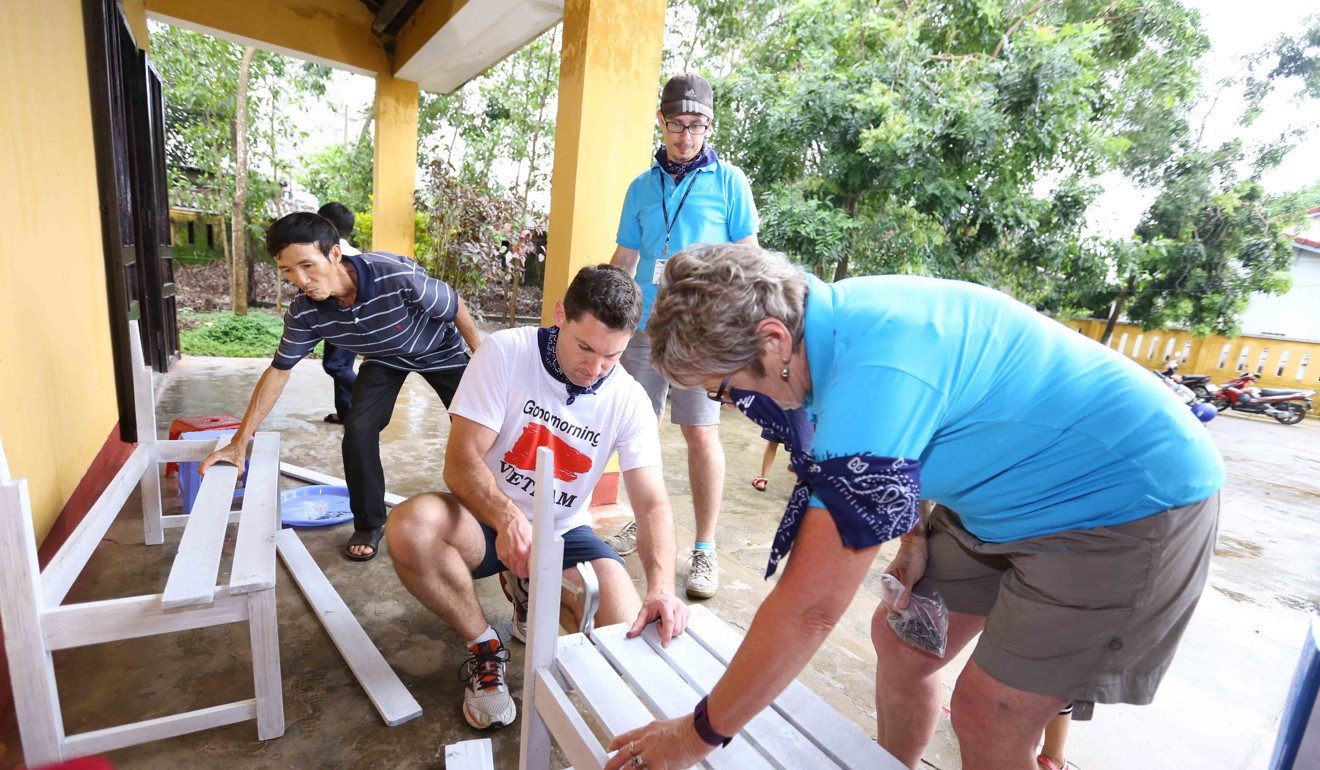
Voluntourism and the white saviour complex: travellers may be doing more harm than good
Thinking of helping out at an orphanage on your holiday? Think again. Volunteering holidays may be a popular travel trend, but who is it really helping?
Natural disasters such as the devastating series of earthquakes and subsequent tsunami that hit the Indonesian island of Sulawesi on September 28, leaving hundreds dead and thousands displaced, rightfully spark an outpouring of compassion and charitable donations.
For some people, though, that isn’t sufficient, and slacktivism – supporting a cause without moving from the comfort of the couch – doesn’t go far enough, either. Instead, they want to get their hands dirty and make a “real difference”. Enter the voluntourist.
Why Hong Kong students’ volunteering may do more harm than good
Of all the tourism subtypes, voluntourism is touted as the most meaningful, offering the earnest traveller the opportunity to improve the lives of those less fortunate than themselves. However, debate abounds as to whether this approach to travelling – particularly popular among Western tourists – does more harm than good, serving to reinforce the “white-saviour industrial complex” rather than the communities supposedly in need.
Estimates as to the size of the industry vary, although it is believed that millions enlist in programmes each year, making it a multibillion-dollar enterprise. A quick Google search for “volunteer Asia” returns a staggering 79 million results, trumpeting projects in Nepal, Thailand, Vietnam, Indonesia and beyond, with orphanages topping the search terms.
Author J.K. Rowling has often spoken out against voluntourism
“There is no such thing as a ‘good’ orphanage,” according to a September 13 article in British newspaper The Guardian. “Eighty years of research confirms that children do best in a family,” the report continues. This is supported by ReThink Orphanages Network, an Australian organisation that aims to end the unnecessary institutionalisation of children by changing the way individuals and companies engage with international aid and development.
The organisation claims that of the more than 8 million children living in orphanages internationally, 80 per cent have at least one living parent or other family.
“The institutionalisation of children is, in many cases, driven by the well-meaning but uninformed support of foreign donors, orphanage voluntourism, and the supply chain of people, money and resources that drive the orphanage industry,” ReThink Orphanages Network states on its website.
According to Unicef, despite a decline in the overall number of orphans in Cambodia, the amount of orphanages has been growing – because voluntourists are willing to part with their money to work at one.
There are few things more cringeworthy than watching 20 British schoolgirls trying to build a well under the scalding Nepalese heat
Herein lies another fundamental flaw in the business of social good. The noble traveller who pays for the privilege of assisting at such institutions is rarely qualified to do so. Frequently fresh school-leavers gaining life experience on a gap year, these half-baked humanitarians have little to offer but unskilled labour. A student from Britain’s Durham University cited in The Guardian expressed it rather eloquently: “There are few things more cringeworthy than watching 20 British schoolgirls trying to build a well under the scalding Nepalese heat.”
Champions of the industry argue that it connects travellers with communities, enabling “give-back-packers” to directly attend to the needs of the underprivileged. Others maintain that the experience is more beneficial for the visitor, who returns from their overseas immersion in hardship and suffering feeling like a better and more altruistic person.

In truth, how much difference can a four-week development project with a hill tribe in Chiang Mai really make, either to the host community or the individual? Perhaps it is best to check your privilege and assuage any associated guilt by donating the not insignificant amount of money such programmes charge directly to charity. Aggregators and evaluation sites such as GiveWell exist to provide guidance as to where contributions will have the most impact.
Suddenly, slacktivism doesn’t sound so bad, after all.
Chinese with L plates driving tourism to South Korea’s Jeju Island

As relations between Beijing and Seoul thaw and Chinese travel agents resume tours to South Korea, it has emerged that one type of traveller from the Middle Kingdom was never persuaded to stay away – the learner driver.
According to an October 2 report by the BBC, 2,172 Chinese nationals have passed their driving test on the holiday island of Jeju this year, an average of 62 a week. The total for the whole of 2010 was 68.
Quality and cost-effectiveness are said to be driving this micro-trend. A five-day package to get a driving licence on South Korea’s “island of the gods” starts from about 8,800 yuan (US$1,280). Plus, it involves a bit of a holiday. In Beijing, a driving course package can cost 15,000 yuan and take months to complete. And you’re stuck in Beijing!
What is more, Chinese tourists do not need a visa to visit Jeju and they can complete the test in their own language. However, speaking to the BBC, Chinese student Mingqui Liu gave an indication of what the main attraction might be: “The Chinese driving test is very strict. The Korean test is easy.”
What that says about Chinese drivers, reputed to be some of the worst in Asia, is perhaps best left unexplored.
Bali’s largest landfill catches fire, again

The blaze, which burned for more than a day and prevented normal operations at the landfill from resuming until September 30, according to website Coconuts.co, generated a thick plume of acrid smoke. An article in The Sydney Morning Herald stated that it caused breathing difficulties for locals.
It is not the first time that Bali has had an issue with waste – it is not even the first time this particular landfill has caught fire this year – reminders that much still needs to be done when it comes to the popular destination’s approach to rubbish disposal.

